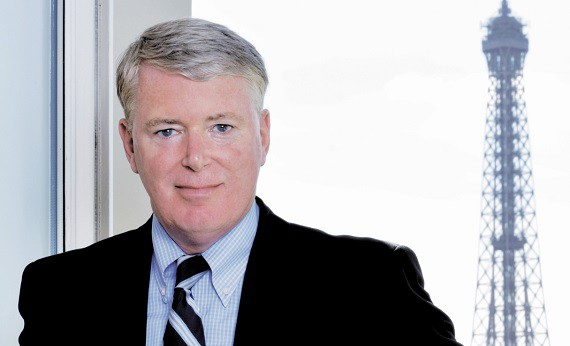The company went on to introduce vodka and tonic, whisky and ginger, rum and cola and, in Scotland, vodka and whisky with lemonade. It was ground-breaking at the time.
SAFE PAIR OF HANDS
James Burrough was bought by Whitbread and, in turn, Whitbread pulled out of drinks to concentrate on retailing. Riley found himself at Allied-Lyons as marketing director of Beefeater. At the time, Allied was a sprawling conglomerate, including brewing and distilling, owning pubs, and food concepts such as Baskin-Robbins and Dunkin’ Donuts.
Riley, obviously regarded as a safe pair of hands with more than his fair share of charm, was then sent to Russia to see if there were any interesting, good quality vodka brands up for sale.
This was the time of Boris Yeltsin and the emergence of the now famous oligarchs, as the state tried to raise money by selling off some of its utilities and other interests, such as distilleries. Riley got the run-around and returned. Within an Allied reorganisation, he became head of Allied’s scotch brands, mainly Ballantine’s, Teacher’s and Laphroaig.
With an uncanny ability to know when is the right time to move (2005 – Allied-Domecq was subsequently carved up by Pernod Ricard and Fortune Brands, which became Beam and now Beam Suntory, with a little help from Diageo), Riley jumped ship again and went to work on a little-known Irish whiskey brand called Jameson, part of the Irish Distillers’ portfolio, now owned by Pernod Ricard. This was 1997.
It was a challenging move, going from the second largest drinks company in the world, handling volumes of around 12m cases, to Irish Distillers where Jameson was shifting about 800,000 cases.
“At that time, Pernod Ricard had no global brands. The Ricard brand was massive in France. I could see the potential of Irish whiskey and Jameson had to be the vehicle.
In 2000, Canadian conglomerate Seagram decided to sell its drinks business – that was the start of making Pernod Ricard the global company it is today. Diageo and Pernod carved up Seagram’s drinks portfolio.
Riley relates another seminal moment – a meeting with Irish Distillers’ Richard Burrows, who became Pernod’s joint managing director. “He poured a Jameson into a Waterford crystal tumbler and asked me to taste it. It was a wake-up moment. It was totally different from scotch and something distinctive.
“Jameson started from a difference place. Sales were mostly UK and Ireland. The question was how to encourage young American adults to say: ‘I want to drink Jameson.’ People were drinking vodka at that time. Jameson is, obviously, not a scotch, so we had to create our own space. We wanted to be the next Jack Daniel’s,” says Riley.
The strategy was to target bars in New York, specifically Manhattan, below 96th street. Irish Distillers had an ‘early adopter’ undergraduate trainee scheme. These young (predominately) men were Jameson’s ‘secret weapon’. They went round bars conducting tastings, conveying their enthusiasm both for Jameson and for all things Irish. In New York, with its ex-pat Irish community, it was akin to pushing against an open door.




